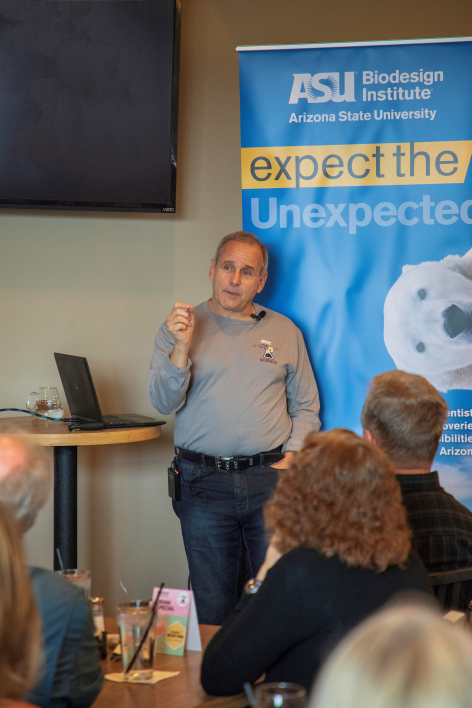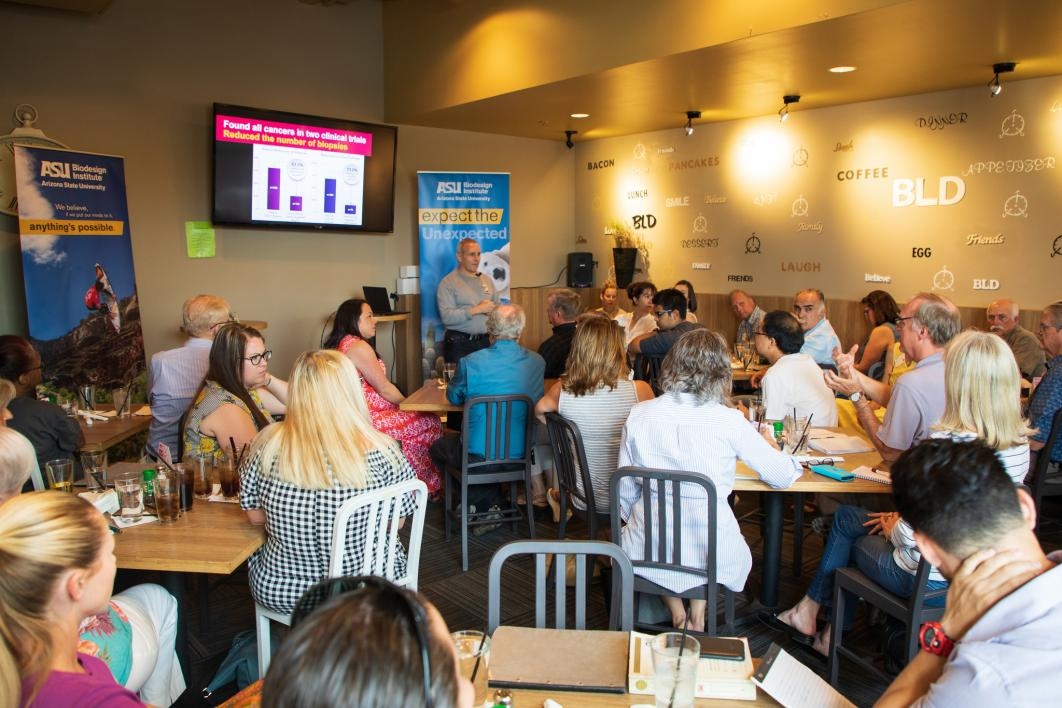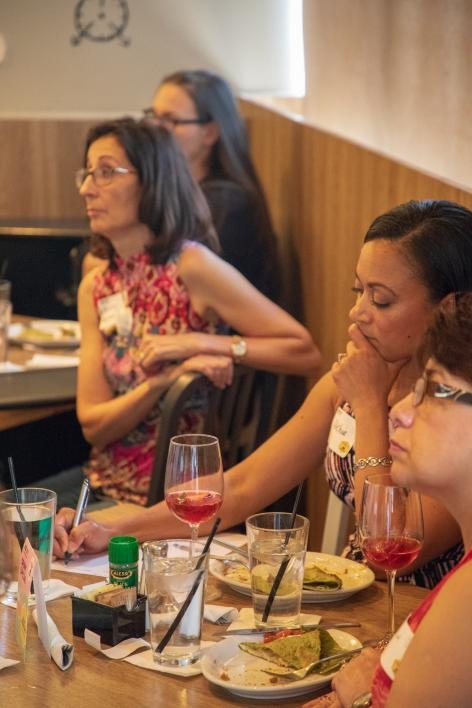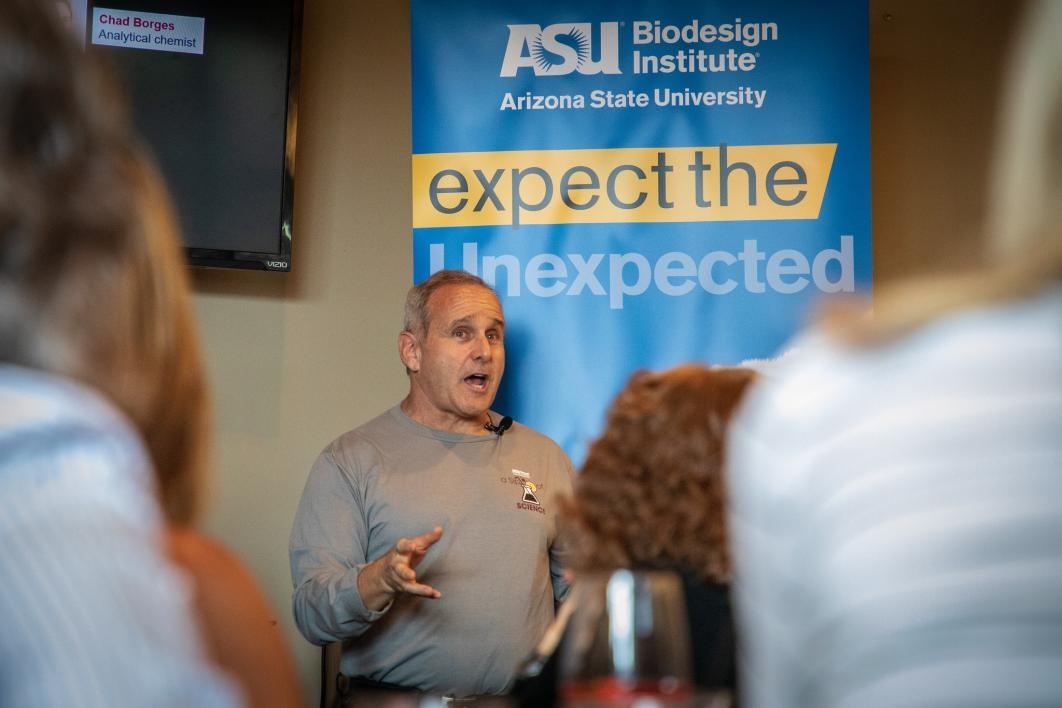Why ASU’s Biodesign Institute executive director Josh LaBaer is optimistic about cancer
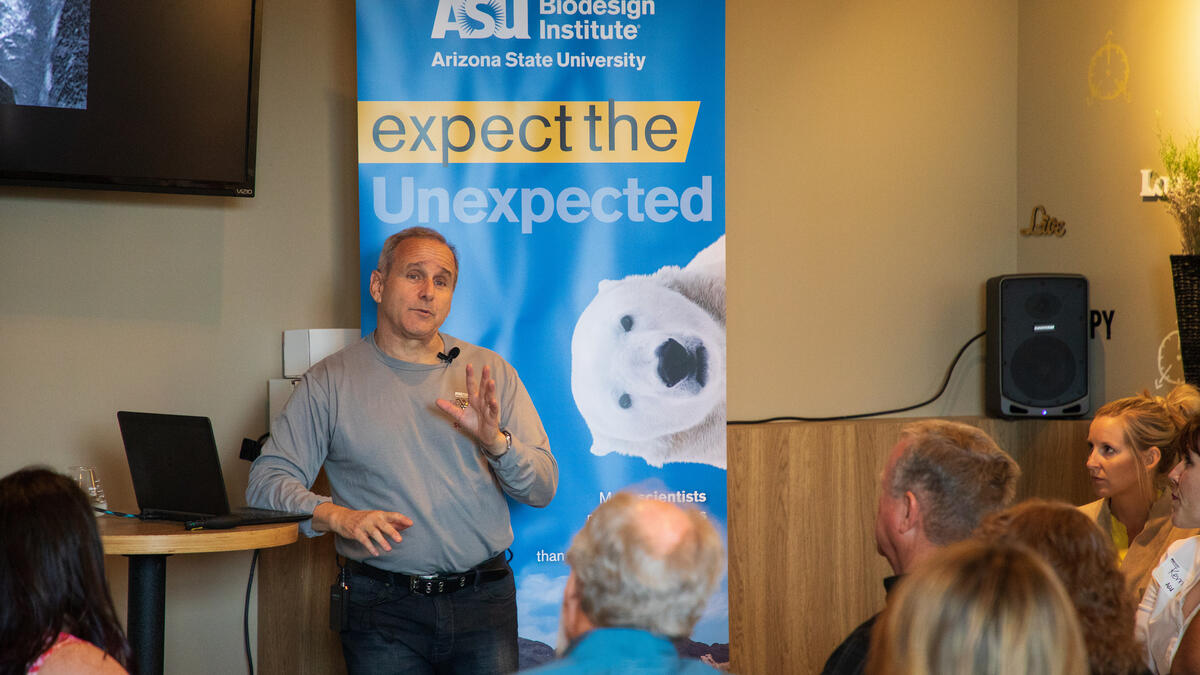
Biodesign Institute executive director Josh LaBaer spoke at "A Sip of Science" Sunday in Chandler.
Arizona State University Biodesign Institute executive director Josh LaBaer hosted more than 50 community members May 6 at BLD restaurant in Chandler. LaBaer, a leading cancer researcher and also the executive director of the Biodesign Virginia G. Piper Center for Personalized Diagnostics, walked the crowd through the latest advances in his field.
The conversation was the fifth event in Biodesign’s new “Sip of Science” series, which brings top scientists to local restaurants for an open dialogue about fascinating discoveries. LaBaer said that despite many challenges, he remains optimistic about researchers’ capacity to find new cancer treatments.
“We have made remarkable headway,” LaBaer said.
“We’ve come from the age of the microscope to the age of the molecule,” he said. “If you want to understand cancer, you have to know about the proteins that cause it.”
Today, scientists like LaBaer study cancer at a more fundamental level than in the past. Using state-of-the-art tools, they can see another dimension of information about cancer cells.
Cancer doctors can also narrow down diagnoses to sub-types of cancer, which may respond better to specifically targeted treatments. Much of LaBaer’s research focuses on breast cancer and proteins that cause it. He holds both a MD and a PhD in biochemistry and biophysics.
LaBaer emphasized the importance of catching cancer early. About 182,000 American women get diagnosed with breast cancer a year, and about 40,000 a year die from the disease. But for many forms of cancer, most patients can survive if they are treated when their cancer is at Stage 0 or Stage 1. Working with Biodesign’s Karen Anderson, LaBaer invented a blood test for breast cancer that has been licensed to a biotechnology company for commercialization.
LaBaer also answered questions from the group and described his role as executive director at Biodesign. He highlighted the interconnected research going on in other Biodesign research labs, updated guests on the new Biodesign C building and the first-of-its-kind Compact X-Ray Free Electron Laser, and shared his goal to double the size of the Biodesign Institute.
The “Sip of Science” series will return next spring for more lively discussions between top Biodesign scientists and the inquisitive public.
More Science and technology
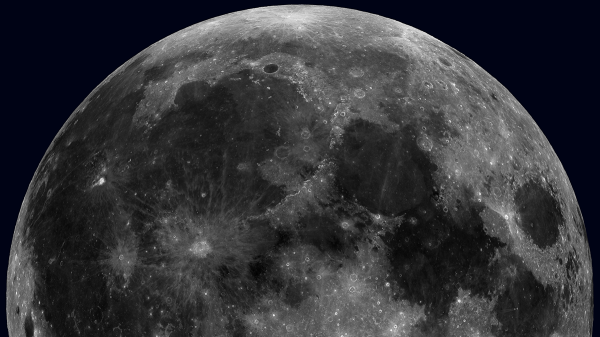
ASU teams up with industry for moon rover project to advance lunar exploration for NASA Artemis missions
Arizona State University continues to advance its presence in the commercial space sector, building strategic partnerships with…
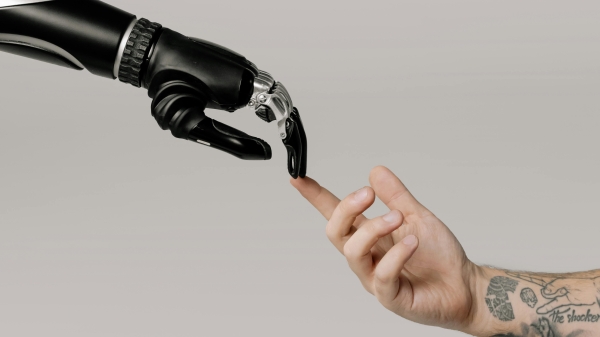
ASU workgroup addresses ethical questions about the use of AI in higher ed
As artificial intelligence becomes more ubiquitous in our everyday lives, the AI and Ethics Workgroup at Arizona State University…
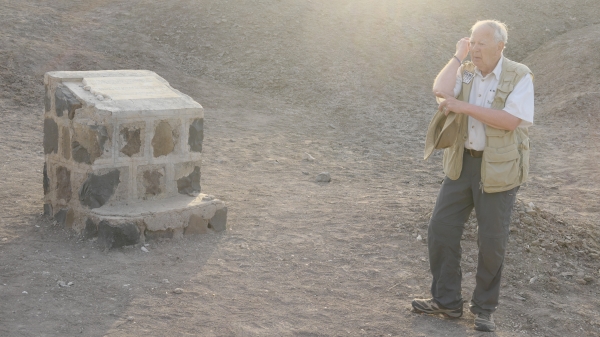
The tiny bone that led to a very big discovery
Nov. 24 will mark 50 years since Arizona State University’s Donald Johanson discovered the Lucy fossil skeleton. It’s a find that…
